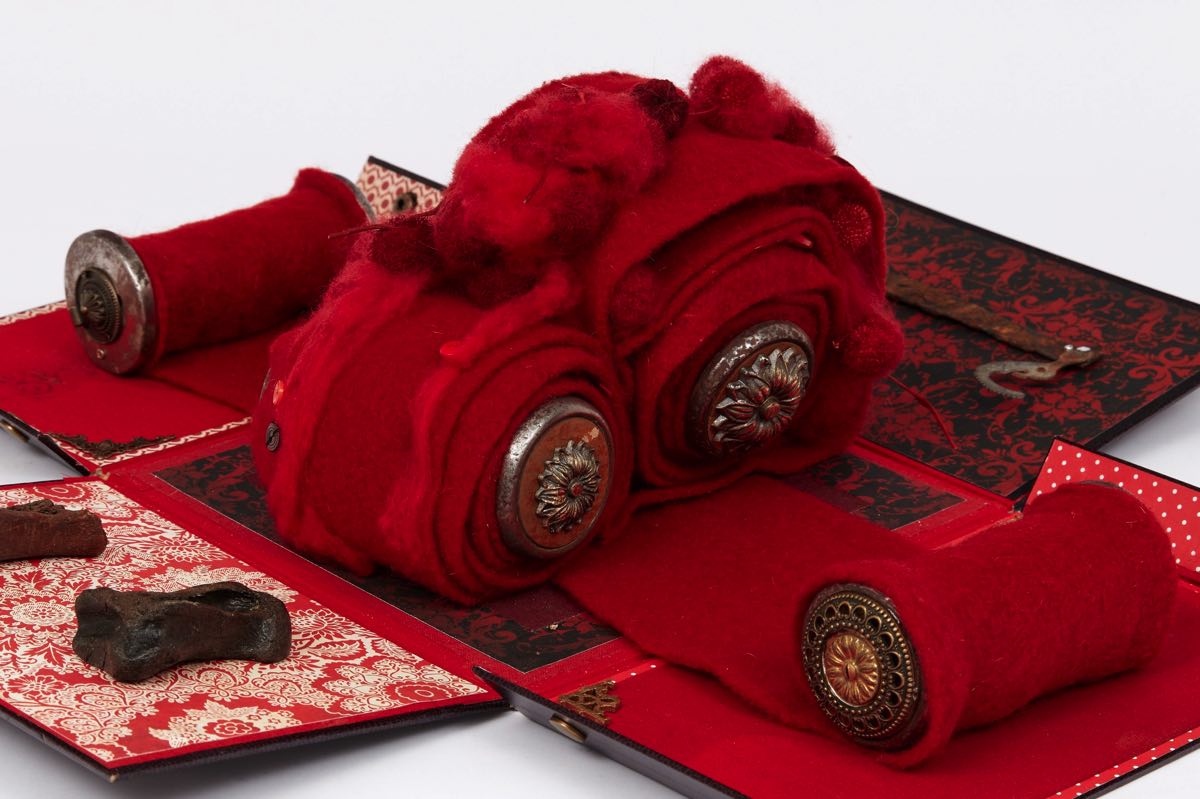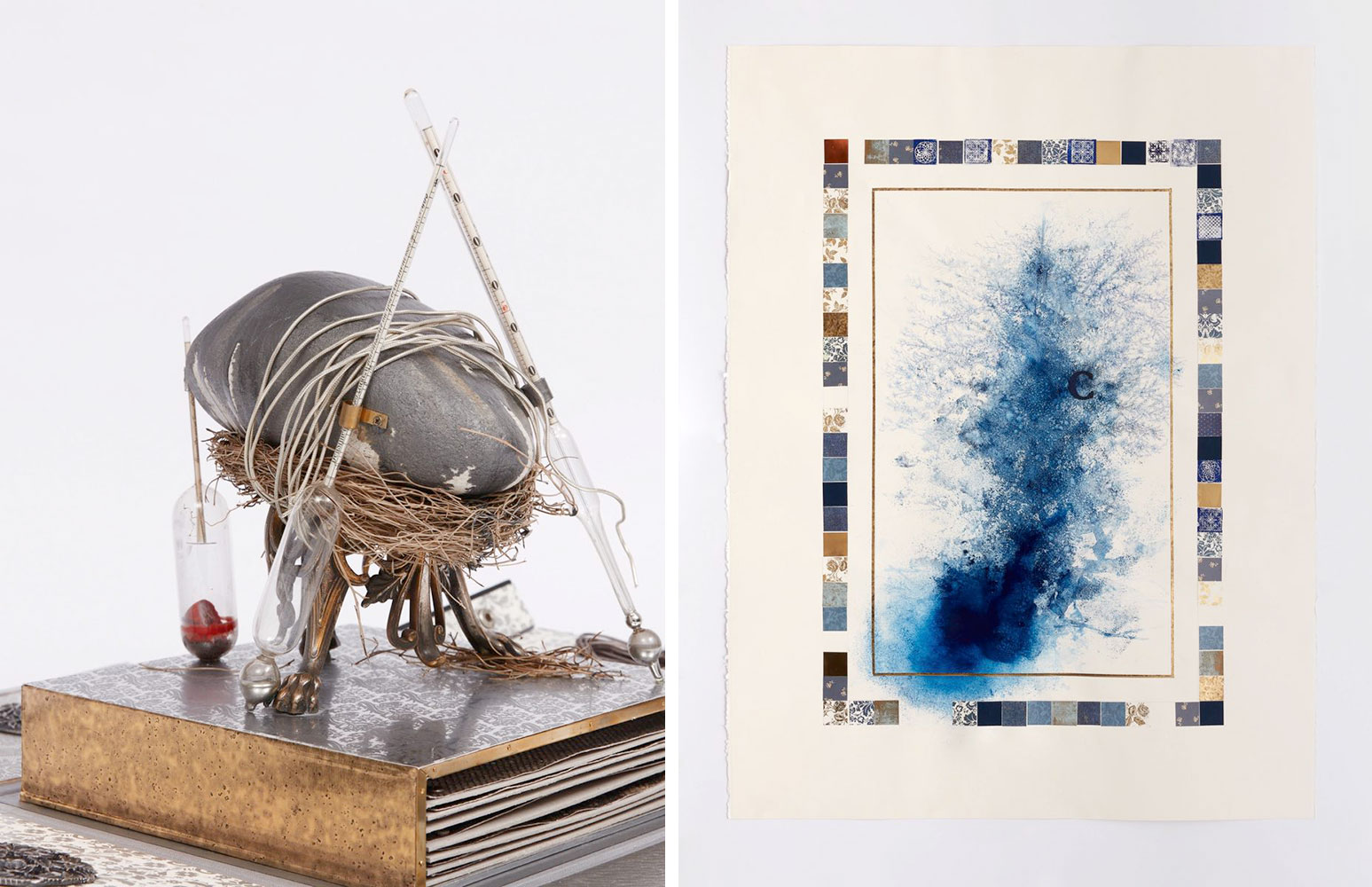PRESENTATION: Ricardo Brey-Gap in the Clouds
 Since the late 1970s, Ricardo Brey’s practice has focused on his research into the origins of humanity and humankind’s place in the world. Born in Cuba, Brey worked briefly as an illustrator and graphic designer before exhibiting in the landmark 1981 group show “Volumen I” at the Centro de Arte Internacional in Havana. The exhibition brought Brey widespread critical attention and ultimately provided him with the opportunity to travel and exhibit internationally.
Since the late 1970s, Ricardo Brey’s practice has focused on his research into the origins of humanity and humankind’s place in the world. Born in Cuba, Brey worked briefly as an illustrator and graphic designer before exhibiting in the landmark 1981 group show “Volumen I” at the Centro de Arte Internacional in Havana. The exhibition brought Brey widespread critical attention and ultimately provided him with the opportunity to travel and exhibit internationally.
By Efi Michalarou
Photo: Museum Hof van Busleyden Archive
Through his exhibition “Gap in the Clouds” Ricardo Brey makes a positive statement and gives a ray of hope in these turbulent times. Brey was inspired to create a series of introspective works after experiencing the pandemic and the race and gender equality protests. The new work is conscious of the past, but turns a brave face to the future. Ricardo Brey’s first major solo exhibition in Belgium in seven years is the result of the many new works Brey made during the COVID19 pandemic. The title refers to the hope that people have to internalise during global, but also personal crises. Despite the grey on the horizon, it is important to look up and keep seeing and remembering the blue. The dominance of the colour blue is therefore also significant in this optimistic exhibition:
Brey associates blue with the sky and the sea, two symbols of freedom and vastness. In his work Ricardo Brey draws inspiration from the strength and depth of Afro-Cuban culture, from his personal recollections and from myths, legends and stories. In this exhibition the centrepiece is the “Every Life is a Fire” series: surprise and wonder evoked by a line of sealed boxes. Their opening is a ritual in itself, that focuses the mind on what is happening. The ongoing project “Every Life is a Fire” consists of a series of boxes that unfold to reveal miniature worlds of sculptural assemblages. For example, the current final piece from this body of work, “Heir of Nothing” (2015-17), first shown at the Museum Mayer van den Bergh, Antwerp, opens to reveal a coronet balanced on a series of texts. In contrast to the expansive transparency of “Universe”, this work and others in the series celebrate interiority while inviting performative engagement. As the art historian John Welchman notes, “Brey’s boxes don’t simply open, instead they unfurl like a flag. The box also houses its own field of reference activated by the very process of opening … as if the box were the site of so many bodily organs and the acts of viewing or entering it a kind of surgical procedure.” (When these pieces were first shown at the Museum of Contemporary Art (M HKA) in Antwerp, volunteers unfolded and folded them twice a day for viewers; their ritualized actions imbuing the boxes with the charged sacredness of reliquaries.) Engaging with concepts of internality, “Every Life is a Fire” poses metaphysical questions about the nature of being, constructing, in Brey’s words, a “hermeneutics of the soul.” Unique to the display of “Gap in the Clouds” are the historical works from the museum’s rich collection. Ricardo Brey reactivates these universal and timeless pieces by appropriating them and integrating them as part of newly composed works of art.
A child of the Cuban Revolution, Ricardo Brey first received widespread critical attention in 1981 following his involvement with and inclusion in the landmark exhibition “Volumen I” at the Centro de Arte Internacional in Havana, contributing to a dynamic, experimental artistic scene in Cuba. Through the 1980s, Brey continued to mine Afro-Cuban traditions and colonialism’s legacy throughout Latin America. In 1992, at the invitation of Belgian curator Jan Hoet, Brey participated in Documenta IX with a monumental installation consisting of readymades and other salvaged objects that invoked a hybrid, transcultural mythology. Brey’s interest in harnessing the associative potential of found objects continued throughout the 1990s and informs his practice today. Since the early 2000s, the artist’s interest in the natural world has catalyzed projects like “Universe” (2002-03), consisting of over 1,000 drawings illustrating an “entire” universe—including many species of fish, birds, insects, and plants—its ongoing supplement “Annex” (2003-16), and “Every Life is a Fire” (2009-15), a series of intricate boxes that unfold to reveal artistic microcosms of the observable world, which were included in the 2015 Venice Biennale curated by Okwui Enwezor.
Photo: Ricardo Brey, Tumbling, 2020, Courtesy of the Artist and Alexander Gray Associates, New York – © 2022 Ricardo Brey/Artists Rights Society (ARS), New York
Info: Museum Hof van Busleyden, Mechelen, Belgium, Duration: 20/5-28/8/2022, Days & Hours: Tue-Sun 13:00-18:00, www.hofvanbusleyden.be/

Right: Ricardo Brey, Boogie Boogie, 2021, Courtesy of the Artist and Alexander Gray Associates, New York – © 2022 Ricardo Brey/Artists Rights Society (ARS), New York









